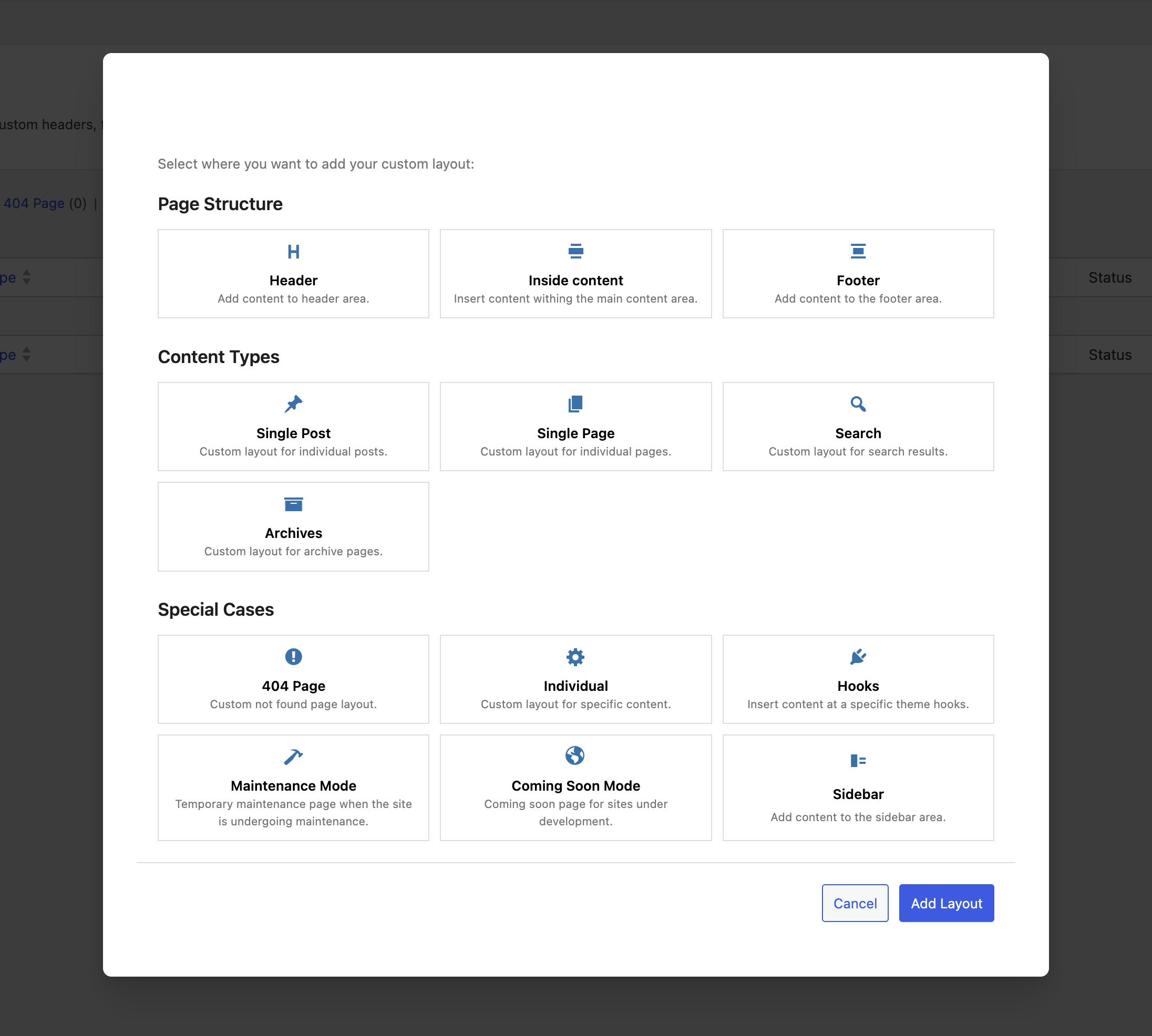Custom Layouts Module Documentation
For more details check out the full Neve documentation and Neve PRO documentation.
Important: The Custom Layouts module is part of all three Neve PRO plans: Personal, Business and Agency.
🧰 Using the Module
- 1
- Navigate to Neve > Custom Layouts.
- 2
- Click on the Add New button.
- 3
- From this moment, you need to decide what type of custom layout you want to create, and depending on what you choose, the settings and locations will be different.

In the Conditional Logic section, you decide the criteria based on which the Custom Layout will be used on a page or not.
Depending on that, you will also have access to dedicated Magic Tags to display dynamic content for each page.
Neve Hooks
Custom Layouts can be inserted in specific places (hooks) of the theme. To have a visual representation of where each hook is located, just click on the Show Hooks link in the top admin bar, when visiting your site.



